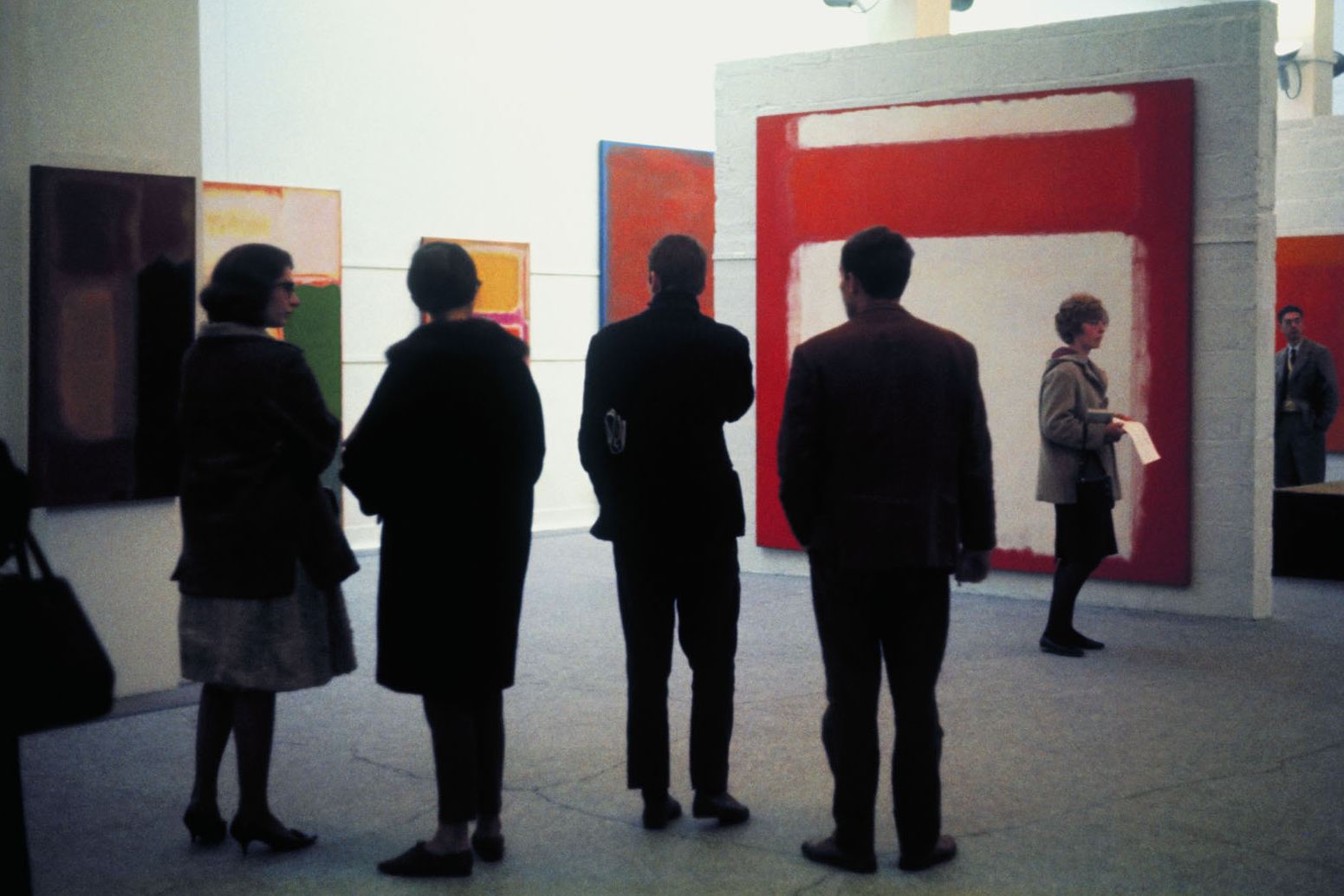 The exhibition that made an indelible mark on the art world: Mark Rothko's 1961 exhibit at Whitechapel Gallery. Photograph: Sandra Lousada.
The exhibition that made an indelible mark on the art world: Mark Rothko's 1961 exhibit at Whitechapel Gallery. Photograph: Sandra Lousada.
Talk about making an impression: Mark Rothko's 1961 solo show at Whitechapel Gallery is still described as nothing short of electrifying. "Shocked... spellbound... transformed," were just a few of the adjectives elicited by viewers who witnessed the monumental show. Simply put, Rothko bowled over the British public, who were overwhelmed by the vastness and vibrancy of his work. And the impression has been a lasting one -- Whitechapel is now hosting an innovative exhibit which pays homage to the artist and the show that stunned a nation.
Commemorating the 50th anniversary of his groundbreaking London debut, Whitechapel's Rothko in Britain highlights the artist's connections with the country and his British contemporaries. The show spotlights one of Rothko's most important works, Light Red Over Black (1957) alongside photographs, testimonies, and archival footage from the '61 event, as well as interviews with artists and visitors to the show.
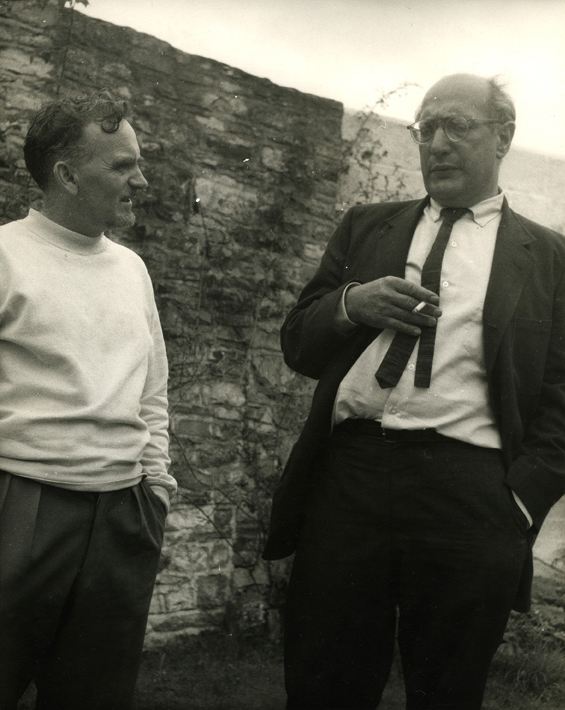 Rothko first came to Britain in the summer of 1959, and resided with fellow painters William Scott and Peter Lanyon, respectively. Terrified of flying, the artist journeyed back to the country two years later by sea, due to the personal and professional relationships he established within the British art scene. In addition to his friends in the art circle, Rothko was drawn to the U.K. by a sense of historical and cultural kinship. "I feel so in tune with people like Shakespeare and Dickens I often think they must really have been Russian Jews who emigrated to New York," the artist once wrote. Over the next decade Rothko continued to develop close ties with Britain as his art evolved. (Left: William Scott and Mark Rothko at Elm Tree Cottage, Hallatrow, Somerset, August 1959. Photograph: James Scott, (c) James Scott, Courtesy of William Scott Foundation.).
Rothko first came to Britain in the summer of 1959, and resided with fellow painters William Scott and Peter Lanyon, respectively. Terrified of flying, the artist journeyed back to the country two years later by sea, due to the personal and professional relationships he established within the British art scene. In addition to his friends in the art circle, Rothko was drawn to the U.K. by a sense of historical and cultural kinship. "I feel so in tune with people like Shakespeare and Dickens I often think they must really have been Russian Jews who emigrated to New York," the artist once wrote. Over the next decade Rothko continued to develop close ties with Britain as his art evolved. (Left: William Scott and Mark Rothko at Elm Tree Cottage, Hallatrow, Somerset, August 1959. Photograph: James Scott, (c) James Scott, Courtesy of William Scott Foundation.).
"Rothko, like any artist who is at the beginning of their career, experimented with different themes and styles. He made portraits and landscapes and slowly shifted to the works that we recognize as color fields, and which was later categorized as 'abstract expressionism.' Nevertheless, he did not consider himself as an abstract painter," said Whitechapel curator Nayia Yiakoumaki, in a recent interview with MutualArt.
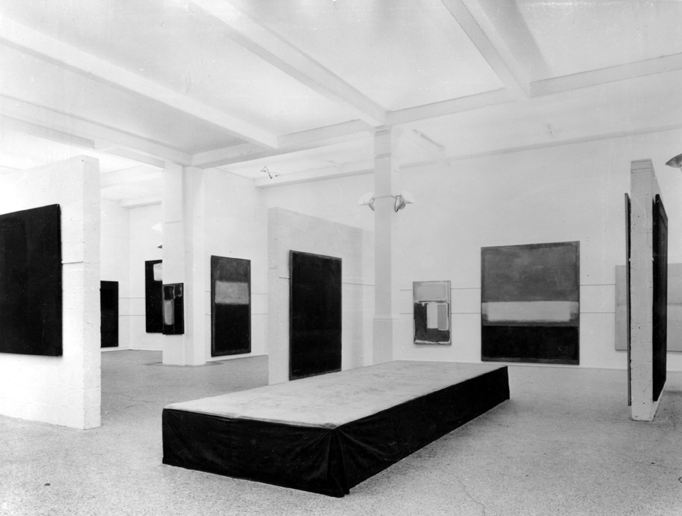 Installation View, Mark Rothko 1961, Whitechapel Gallery, Whitechapel Gallery Archive. Photograph: Edgar Hyma
Installation View, Mark Rothko 1961, Whitechapel Gallery, Whitechapel Gallery Archive. Photograph: Edgar Hyma
Based on the audience reactions at the infamous 1961 affair, it certainly seemed as though Rothko's style of painting defied all classification. The works on view were some prime examples of his celebrated "multiform works," 48 in total from a touring show that originated at N.Y.'s MoMA. These paintings personified the culmination of Rothko's signature style -- enormous canvases depicting large blocks of contrasting yet complimentary colors. "The familiar rectangles hovering on large fields of color, are perhaps what established him in the art world," said Yiakoumaki. (Below: Rothko's Light Red Over Black (1957) is featured in the new exhibition. Oil on canvas; (c) 1998 Kate Rothko Prizel & Christopher Rothko ARS, NY and DACS, London.).
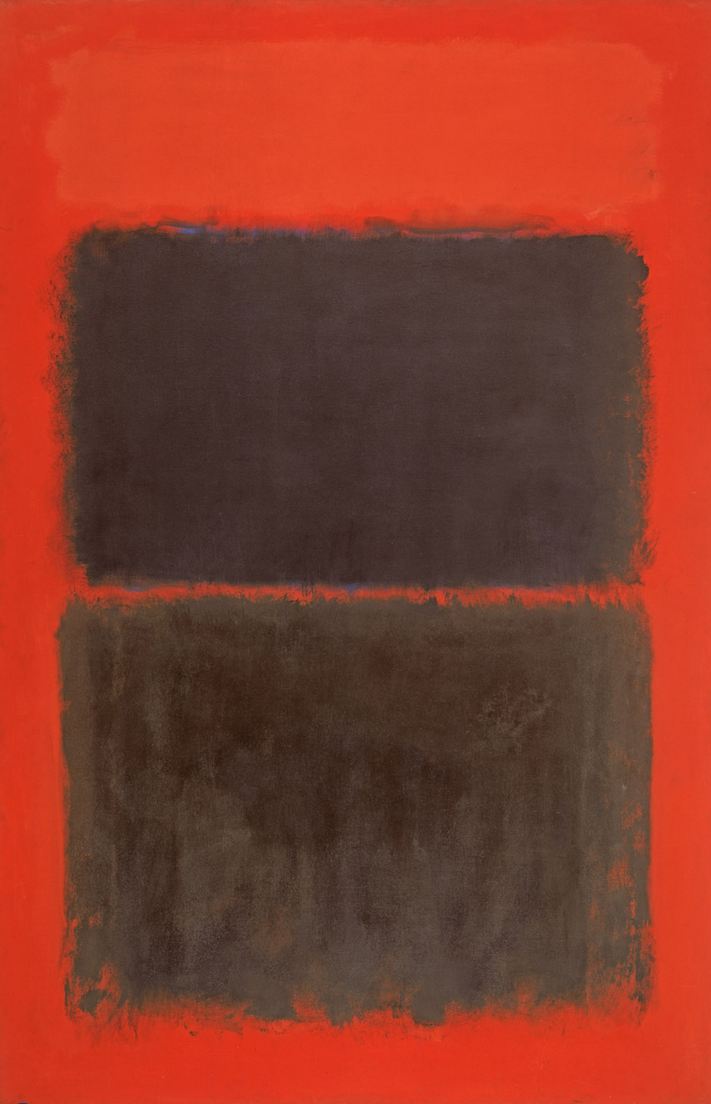 The paintings were startling, not only because of their vivid immediacy, but the manner in which they were displayed in the gallery. Surrounded by the large-scale canvases, viewers felt fully immersed in Rothko's colors, while simultaneously the gallery space made the atmosphere seem cavernous. Rothko himself stressed the importance of the
The paintings were startling, not only because of their vivid immediacy, but the manner in which they were displayed in the gallery. Surrounded by the large-scale canvases, viewers felt fully immersed in Rothko's colors, while simultaneously the gallery space made the atmosphere seem cavernous. Rothko himself stressed the importance of the 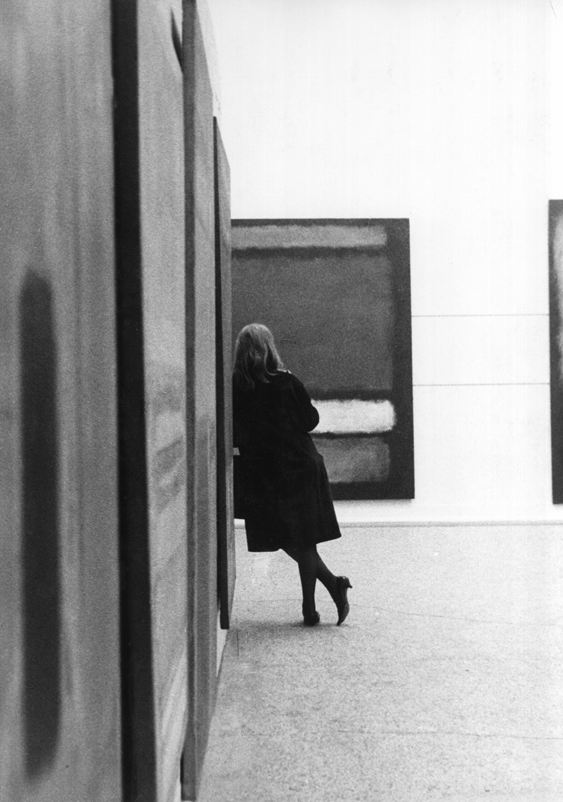 paintings' size -- he wanted viewers to feel "enveloped within the painting;" even today, the paintings continue to overwhelm the senses.
paintings' size -- he wanted viewers to feel "enveloped within the painting;" even today, the paintings continue to overwhelm the senses.
"The viewer is drawn to [the paintings], experiencing the artist's understanding of space and time at the same instant," Yiakoumaki said. "The large volume of color is very enchanting too, as well as the fact that one is constantly trying to center one's self onto the image as well as arrest the imagination on something more schematic." And while Rothko wasn't the only artist of the era working with abstract forms, his particular style set him apart. "This element of eliminating the figure, and concentrating on the depiction of some kind of 'organized' void, was what made his works differ from other painters of the same period such as Jackson Pollock, or Robert Motherwell," she explained. (Above and below right, both images from Rothko's 1961 Whitechapel show; Photographs by Sandra Lousada.)
The success of Rothko's solo exhibit in Britain literally transcended all high hopes for the show. One patron, a Muslim man, knelt in front of the paintings and began to pray -- a reaction that delighted the 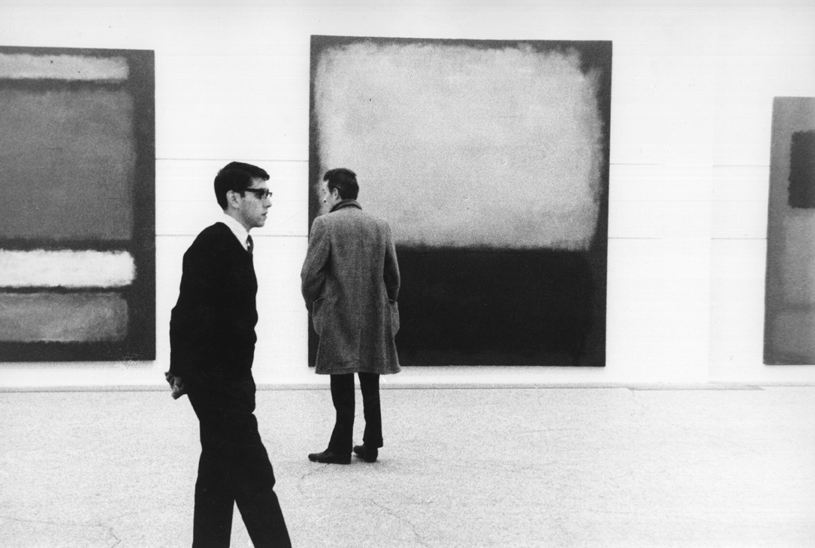 artist, who frequently emphasized an aspect of spirituality in his works. Other visitors were moved to tears, a display that reinforced Rothko's artistic intentions. He once said his interest was "only in expressing basic human emotions -- tragedy, ecstasy, doom, and so on. And the fact that a lot of people break down and cry when confronted with my pictures shows that I can communicate those basic human emotions... The people who weep before my pictures are having the same religious experience I had when I painted them."
artist, who frequently emphasized an aspect of spirituality in his works. Other visitors were moved to tears, a display that reinforced Rothko's artistic intentions. He once said his interest was "only in expressing basic human emotions -- tragedy, ecstasy, doom, and so on. And the fact that a lot of people break down and cry when confronted with my pictures shows that I can communicate those basic human emotions... The people who weep before my pictures are having the same religious experience I had when I painted them."
Rothko in Britain captures the essence of the original show, which marked a turning-point in the artist's career. "This exhibition was very important because it introduced his work to the British pubic for the first time, in such a large volume and at a public gallery." And everyone was suitably impressed by the works that, as Yiakoumaki says, "from this exhibition on, the art world was captivated by Rothko and subsequently, [Tate Director] Norman Reid, approached the artist to discuss a purchase of works... culminating with the substantial donation of eight of the Seagram Murals to the Tate in 1970."
Tragically, the large canvases arrived at the famed British institution the same day Rothko committed suicide. Yet Rothko's approach to painting continued to affect later generations of artists, inspiring others to take risks in their art, and his influence is certainly still tangible at the gallery that brought his art to a whole new audience.
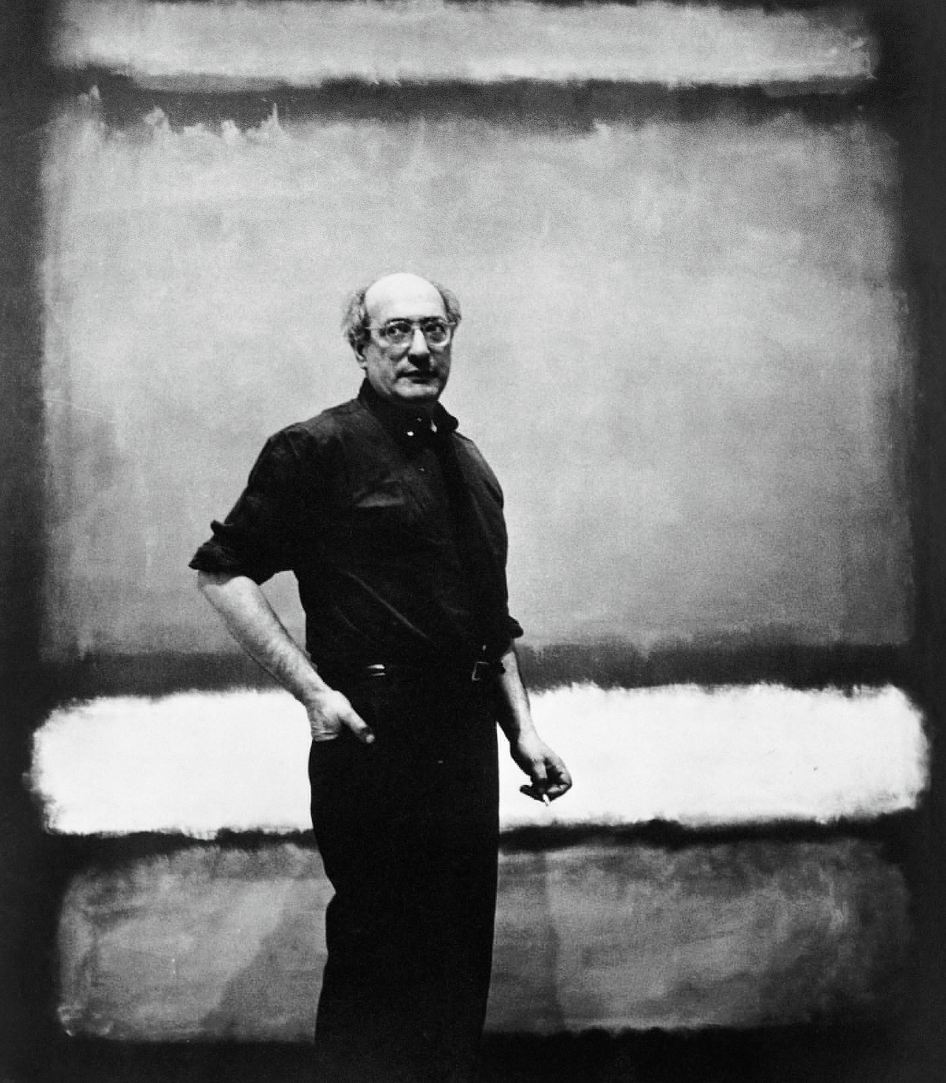 The artist with one of his celebrated 'multiform' paintings
The artist with one of his celebrated 'multiform' paintings
Rothko in Britain is now open at the Whitechapel Gallery until February 26, 2012.
Written by MutualArt writer Lauren Meir
Our 2024 Coverage Needs You
It's Another Trump-Biden Showdown — And We Need Your Help
The Future Of Democracy Is At Stake
Our 2024 Coverage Needs You
Your Loyalty Means The World To Us
As Americans head to the polls in 2024, the very future of our country is at stake. At HuffPost, we believe that a free press is critical to creating well-informed voters. That's why our journalism is free for everyone, even though other newsrooms retreat behind expensive paywalls.
Our journalists will continue to cover the twists and turns during this historic presidential election. With your help, we'll bring you hard-hitting investigations, well-researched analysis and timely takes you can't find elsewhere. Reporting in this current political climate is a responsibility we do not take lightly, and we thank you for your support.
Contribute as little as $2 to keep our news free for all.
Can't afford to donate? Support HuffPost by creating a free account and log in while you read.
The 2024 election is heating up, and women's rights, health care, voting rights, and the very future of democracy are all at stake. Donald Trump will face Joe Biden in the most consequential vote of our time. And HuffPost will be there, covering every twist and turn. America's future hangs in the balance. Would you consider contributing to support our journalism and keep it free for all during this critical season?
HuffPost believes news should be accessible to everyone, regardless of their ability to pay for it. We rely on readers like you to help fund our work. Any contribution you can make — even as little as $2 — goes directly toward supporting the impactful journalism that we will continue to produce this year. Thank you for being part of our story.
Can't afford to donate? Support HuffPost by creating a free account and log in while you read.
It's official: Donald Trump will face Joe Biden this fall in the presidential election. As we face the most consequential presidential election of our time, HuffPost is committed to bringing you up-to-date, accurate news about the 2024 race. While other outlets have retreated behind paywalls, you can trust our news will stay free.
But we can't do it without your help. Reader funding is one of the key ways we support our newsroom. Would you consider making a donation to help fund our news during this critical time? Your contributions are vital to supporting a free press.
Contribute as little as $2 to keep our journalism free and accessible to all.
Can't afford to donate? Support HuffPost by creating a free account and log in while you read.
As Americans head to the polls in 2024, the very future of our country is at stake. At HuffPost, we believe that a free press is critical to creating well-informed voters. That's why our journalism is free for everyone, even though other newsrooms retreat behind expensive paywalls.
Our journalists will continue to cover the twists and turns during this historic presidential election. With your help, we'll bring you hard-hitting investigations, well-researched analysis and timely takes you can't find elsewhere. Reporting in this current political climate is a responsibility we do not take lightly, and we thank you for your support.
Contribute as little as $2 to keep our news free for all.
Can't afford to donate? Support HuffPost by creating a free account and log in while you read.
Dear HuffPost Reader
Thank you for your past contribution to HuffPost. We are sincerely grateful for readers like you who help us ensure that we can keep our journalism free for everyone.
The stakes are high this year, and our 2024 coverage could use continued support. Would you consider becoming a regular HuffPost contributor?
Dear HuffPost Reader
Thank you for your past contribution to HuffPost. We are sincerely grateful for readers like you who help us ensure that we can keep our journalism free for everyone.
The stakes are high this year, and our 2024 coverage could use continued support. If circumstances have changed since you last contributed, we hope you'll consider contributing to HuffPost once more.
Already contributed? Log in to hide these messages.








